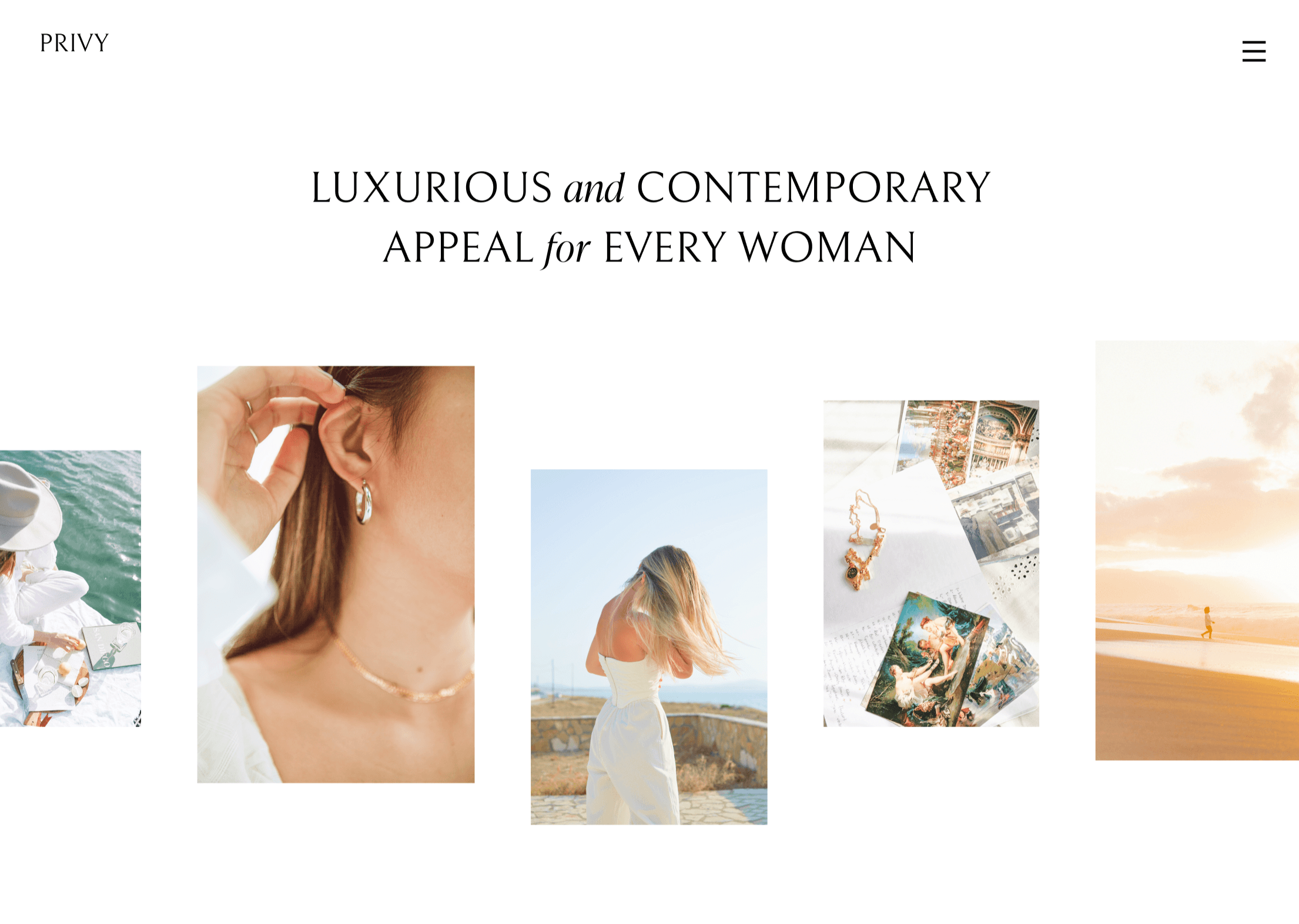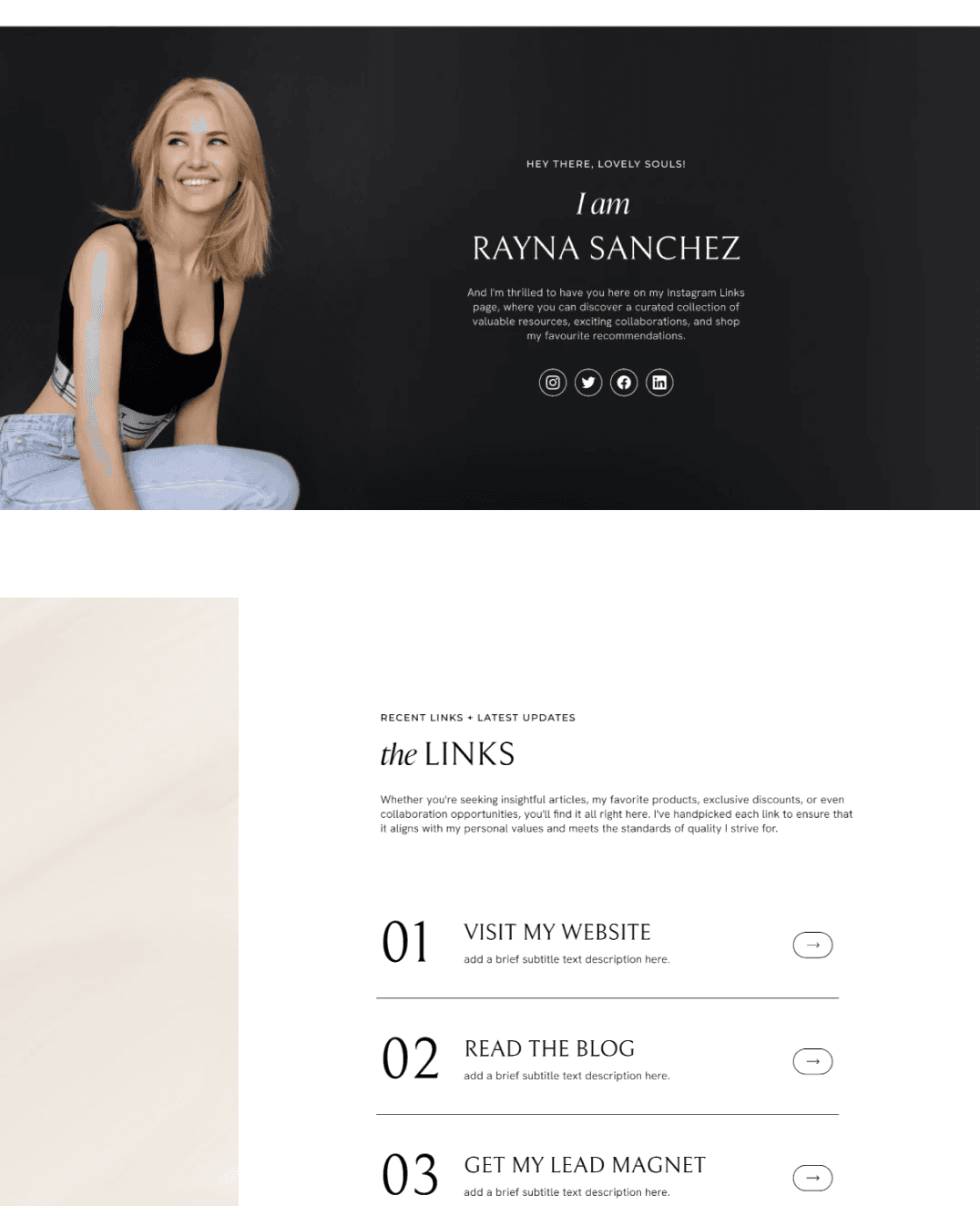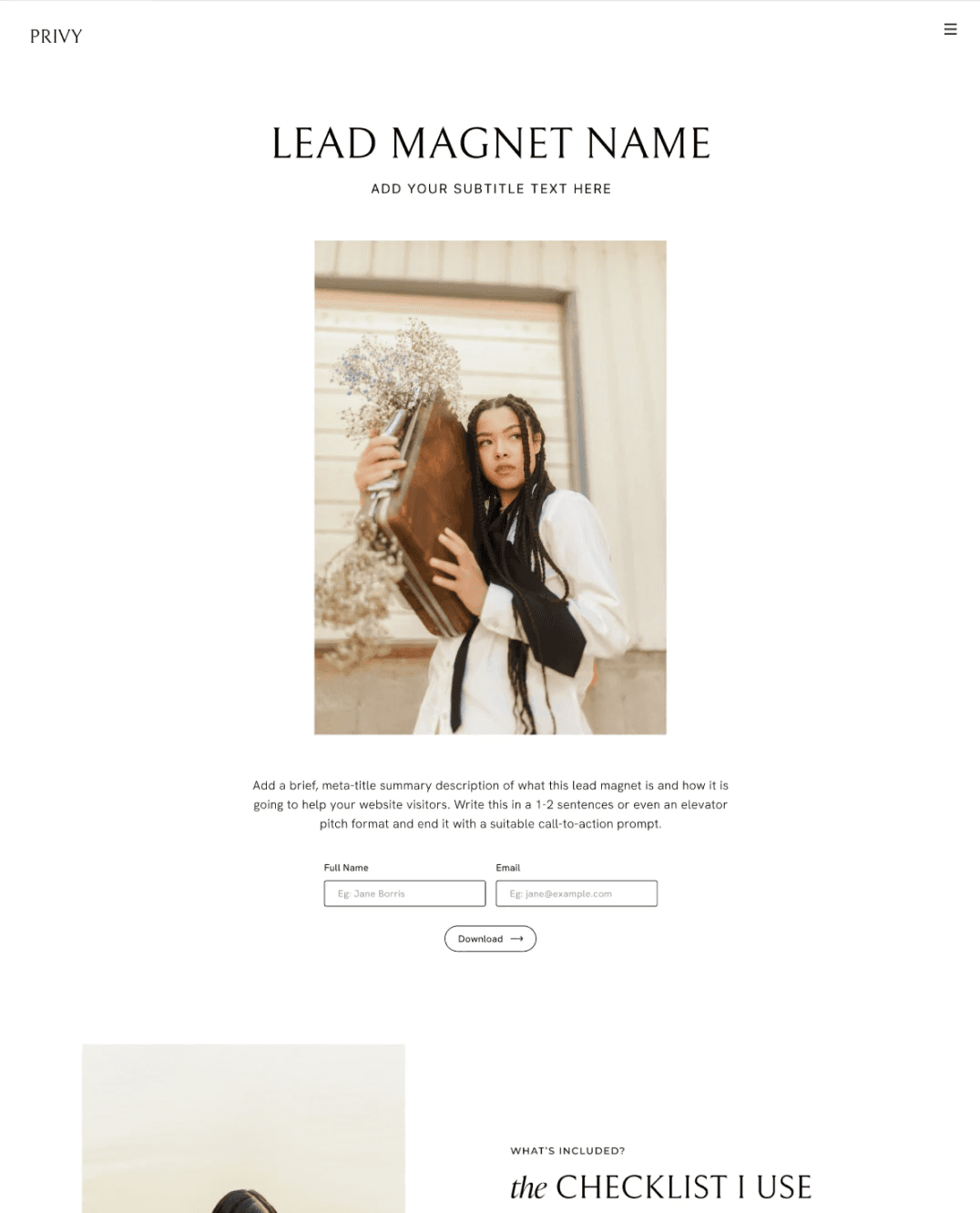What Is Brand Voice and How To Create One for Your Business (2024)
Jul 29, 2024
Branding
Marketing
Have you ever read something and felt like the writer was speaking directly to you? That’s the magic of a well-crafted brand voice. But, more than just a catchy tone or unique phrases, brand voice is the personality of your business—what makes it familiar, memorable, and trustworthy. And for coaches, consultants, and creatives, your voice isn’t just about standing out; it’s about speaking directly to the hearts and minds of the people you’re here to serve.
So, if you’re ready to build a brand voice that not only reflects who you are but also brings clients closer and encourages trust, let’s explore the steps to make it happen.
What is brand voice?
Brand voice is the distinct style and personality your business uses to communicate. It’s the tone, language, and attitude that come through in all your messaging. Just like a good friend, a well-defined brand voice is consistent and recognizable, helping to build trust and a sense of community around your brand.
Imagine you went to a dinner party and you’re chatting with all the guests. One person stands out because they’re great at storytelling—the flow of their words, their language, and their personality all make for a memorable experience. That’s the power of a well-defined brand voice.
What is an example of a brand voice?

Warm and Friendly: Brands like Starbucks, Target, and Southwest Airlines use a warm and friendly voice. They engage customers in a friendly and informal way, making them feel welcome and comfortable.
Authoritative and Trustworthy: Companies like Google, The New York Times, and Mayo Clinic use an authoritative and trustworthy voice. They convey expertise and knowledge to gain customers' trust and respect.
Quirky and Offbeat: Brands such as Ben & Jerry's, Taco Bell, and Urban Outfitters employ a quirky and offbeat voice. They aim to entertain and surprise customers with their unconventional and humorous tone.
Thoughtful and Empowering: Organizations like Patagonia, Nike, Whole Foods Market, and National Geographic use a thoughtful and empowering voice. They inspire and motivate customers with messages that align with their values and aspirations.
Professional: This brand voice is authoritative, knowledgeable, and informative. It conveys a sense of expertise and trustworthiness, and speaks to customers in a formal manner. Examples: Microsoft, McKinsey & Company, and American Express.
Playful: This brand voice is fun, lighthearted, and often irreverent. It aims to entertain customers and make them laugh. Examples: Skittles, Old Spice, Coca-Cola, and Lego.
Why does Brand Voice matter?
Think of your favorite brands. Maybe they inspire you, or you just feel connected to their energy. For most of us, that connection is born from more than just great products—it’s the brand voice that keeps us coming back.
A strong, consistent brand voice does several things:
Builds Trust: For service-based businesses like coaching or consulting, a consistent voice reassures clients that you are authentic and reliable.
Increases Recognition: A distinct voice helps your business stand out and be remembered. The more recognizable you are, the more likely clients are to trust and invest in you.
Creates Relatable Experiences: People connect more easily when they feel a brand “gets them.” Your voice gives your audience the feeling of being heard and understood.
For example: A coach who uses a voice that’s both compassionate and empowering can attract clients looking for not only guidance but also support and motivation. Or a creative entrepreneur with a bold, edgy voice might pull in clients who value originality and a fresh perspective.

How is Brand Voice different from Brand Tone?
You know your oldest friend’s personality: how they feel and react to things; what makes them laugh; what makes them cry; how they live their life. But you also know how they respond to life events, saying different things in different situations: at a party, at work, with parents, with children, in a crisis, at a funeral. This is their tone, which they adapt to each situation – their personality remains the same.
When you apply this analogy to your brand:
Brand voice: is your company personality. It is consistent across all channels and doesn’t change.
Brand tone: is the emotional response of your brand voice. You make it appropriate to the situation that you’re communicating or writing about. It demonstrates that you understand what your target audience is feeling, and can empathize appropriately.
How to define your Brand Voice?
Here are some of the things you can consider to Brand voice encompasses the unique tone, language, and personality that a company or brand utilizes to connect with its target audience. It's a mix of elements including word choice, sentence structure, punctuation, and style that collectively create a distinctive vibe for the brand.
The brand voice is instrumental in conveying the brand's values, image, and attitude and is essential for maintaining consistency across all forms of communication, such as advertising, website content, and social media posts.
Here is some step-by—step guidance you can consider to define, refine and update your brand voice:
Define Your Target Audience
Knowing who you're talking to is crucial. Who are your customers? What do they care about? What problems do they face that your product can solve? Use surveys, analytics, industry research, and competitor analysis to get to know your audience inside and out.
Discover ICP (Ideal Customer Profile): Outline the characteristics of your ideal customer, focusing on demographics, behaviors, and needs.
Define Your Audience Personas: Create detailed buyer personas that include demographics, psychographics, and behavioral traits. This will help you craft messages that resonate deeply with different segments of your audience.
Practical Tip: Create detailed buyer personas that include demographics, psychographics, and behavioral traits. This will help you craft messages that resonate deeply with different segments of your audience.Audit your current tone and voice
Take a look at all your content and identify the top performers in terms of likes and engagement. Figure out why they click with your audience:What made the post or video resonate?
Does it speak your audience's language?
How well do they align with your brand's purpose and values?
Do they present valuable information in an easy-to-understand manner?
What voice and tone traits are common in your best content?
Do they incorporate current trends or internet culture that resonates with your audience?
Are they more intriguing or better written?
Can they be further improved?
Which successful elements can be replicated throughout your entire brand's voice?
Practical Tip: As part of auditing your current tone and voice, consider creating a checklist or template to systematically evaluate your content. This can help ensure that you cover all the important aspects and make the auditing process more efficient.

Identify How You Would Like Your Brand Voice to Shape Up
(A) Find existing companies or people you like
Look to brands or public figures that resonate with you for inspiration. Ask yourself:
- What do you admire about their communication style?
- How do they engage with their audience?
Analyze their messaging across different channels and note what works well. Examples include Oatley for its quirky and relatable voice, Oprah for her wisdom and warmth, Disney for its friendliness, and Nike for its aspirational tone.
Practical Tip: Keep a swipe file of brand voices that inspire you. Analyze what you like about their communication style and note how they engage with their audience.
(B) Get Creative with Writing Exercises
Now, let’s put that inspiration to work. Try these exercises:
Describe your brand’s tone with a few key adjectives. Is it warm? Serious? Playful?
Imagine your brand as a person at a party. What would they say? How would they act?
Write a short description of your brand using this new personality.
Draft a social media post or an email in your brand’s voice.
If you’re still exploring, write your About Us page. This is a great place to let your brand’s personality shine.
Practical Tip: Conduct a brand voice workshop with your team. Collaborate on these exercises to ensure everyone is aligned and can contribute ideas.
(C) Define Your Brand Mission and Values
Your mission statement and core values are the foundation of your brand voice. Make sure these are prominently featured in your style guide. They provide context and help keep your messaging aligned with your brand’s overall goals and identity.
Practical Tip: Use your mission and values as a litmus test for all communications. If a message doesn’t align with these core elements, it might need to be reworked.
(D) Add Your Voice Guidelines Section in Your Brand Guidelines
Define and Describe the Voice Traits as If It Were Human
Use customer and company research findings to compile a list of words and phrases that describe the brand as if it were human. Then, group similar words into a single trait. For example, “transparent, honest, and uncomplicated” could be categorized as “clear.” Aim for three to five voice traits.
Practical Tip: Describe the voice dimensions in a matrix (as shared by Nielsen Norman group):
— Serious versus Funny
— Formal versus Casual
— Respectful versus Irreverent
— Matter-of-fact versus EnthusiasticDefine Do’s and Don’ts
Outline specific guidelines for different situations. How should your brand voice come across in product descriptions, social media posts, emails, or customer service interactions? Include any variations in tone that might be appropriate for different platforms or contexts.
Example:
Do: Use friendly, conversational language in social media posts.
Don’t: Use technical jargon or overly complex sentences.Define Sounds Like and Doesn’t Sound Like Chart
Sometimes, it’s easier to define what your brand voice is by also stating what it isn’t. Create a chart with two columns: “Sounds Like” and “Doesn’t Sound Like.” Fill in each side with descriptive words and phrases that clarify your brand’s personality.Example:
Sounds Like: Warm, supportive, encouraging.
Doesn’t Sound Like: Condescending, sarcastic, overly formal.
Practical Tip: Use this chart as a quick reference during content creation to ensure consistency.
Define How You Will Handle Grammar and Other Mechanics
Consistency in grammar and mechanics is key to maintaining a cohesive brand voice. Decide on your rules for punctuation, capitalization, spelling, and more. You might choose to follow a standard style guide like the AP Stylebook or the Chicago Manual of Style but also include any brand-specific preferences.
Practical Tip: Implement a content review process. Have designated team members review content to ensure it adheres to your style guide before publication.
Measuring and Maintaining Brand Voice
To ensure your brand voice remains consistent and effective over time, regularly review and update your style guide. Gather feedback from your audience and team, and be open to making adjustments as needed. Track metrics such as engagement, conversion rates, and customer feedback to measure the impact of your brand voice on your business goals.
Here are some brands that have mastered the art of brand voice:
Corporate Brands
Mailchimp: Known for its friendly, humorous, and slightly cheeky voice, Mailchimp’s communications feel like they're coming from a helpful friend. This tone makes their emails and messages engaging and enjoyable to read.
Innocent Drinks: With a playful and conversational tone, Innocent Drinks makes their brand approachable and relatable. Their fun language and quirky packaging add a touch of personality to their products.
Nike: Nike’s voice is inspirational and motivational, constantly encouraging their audience to strive for greatness. Their powerful messages and slogans like “Just Do It” resonate deeply with their audience, pushing them to overcome challenges.
LEGO: LEGO’s voice is imaginative and fun, perfectly capturing the spirit of creativity and play. Their content inspires both kids and adults to build and create, fostering a sense of wonder and possibility.
Trader Joe’s: With an informal and quirky voice, Trader Joe’s makes grocery shopping feel like a friendly adventure. Their product descriptions and Fearless Flyer newsletter add a personal touch to their brand.
Slack: Slack balances professionalism with a touch of fun. Their voice is clear, concise, and friendly, which aligns perfectly with their product’s functionality, making workplace communication smoother and more enjoyable.
Wendy’s: Famous for its witty and often snarky social media presence, Wendy’s engages its audience with humor and boldness. Their playful tweets and responses create a memorable and entertaining brand experience.
Oatly: Known for its quirky, humorous, and slightly irreverent voice, Oatly makes mundane topics about oat milk engaging. Their playful content and unique tone make them stand out in the crowded beverage market.

Personal Brands
Oprah Winfrey: Oprah’s voice is warm, wise, and empowering, making her audience feel inspired and supported. Her genuine and heartfelt messages resonate deeply, creating a strong connection with her followers.
Gary Vaynerchuk: Bold, energetic, and straightforward, Gary Vaynerchuk connects deeply with entrepreneurs. His no-nonsense advice and motivational speeches inspire his audience to hustle and achieve their goals.
Marie Forleo: Encouraging and upbeat, Marie Forleo’s voice inspires her audience to create a life they love. Her positive and enthusiastic tone makes personal development feel achievable and exciting.
Brené Brown: Authentic and compassionate, Brené Brown fosters a sense of vulnerability and connection. Her relatable stories and heartfelt messages encourage people to embrace their imperfections and build meaningful connections.
Tony Robbins: With a motivational and energetic voice, Tony Robbins drives his audience towards personal growth. His powerful speeches and dynamic presence inspire people to push their limits and achieve success.
Lewis Howes: Known for his inspiring and relatable voice, Lewis Howes focuses on personal development and success. His motivational content encourages his audience to pursue greatness and live fulfilling lives.
Dr. Joe Dispenza: With a knowledgeable and insightful tone, Dr. Joe Dispenza bridges science and spirituality. His content educates his audience on the power of the mind and personal transformation, making complex topics accessible and engaging.
Jim Carrey: Playful and deep, Jim Carrey shares wisdom with humor and heart. His unique voice combines entertainment with thought-provoking messages, making his content both enjoyable and meaningful.
By following these steps and drawing inspiration from successful brands, you can craft a brand voice that not only represents your business authentically but also resonates deeply with your audience. Your brand voice is a powerful tool for building relationships, fostering loyalty, and driving growth. So, let your brand’s personality shine and watch as it connects with customers in meaningful ways.
Wrapping Up:
A strong brand voice is more than just a way to communicate—it's a way to connect, inspire, and build lasting relationships. As we've seen with brands like Nike, Mailchimp, and personal brands like Oprah Winfrey, a well-defined voice can turn a brand from ordinary to extraordinary.
Whether you’re a corporate giant or a personal brand, finding and maintaining your unique voice is essential. It shapes how people perceive you, creates recognition, builds trust, and fosters deep connections. By learning from brands that have perfected their voice, you can craft a distinctive presence that resonates with your audience, helps your brand stand out in a crowded digital landscape and also stand the test of time. Embrace the power of your brand voice, and watch as it transforms your brand into a beloved and trusted presence in the lives of your customers.
Latest in the blog
Category
What is Ideal Customer Profile(s)? Top 10 Strategies to use them to strengthen…
16 minute read

Category
What are customer loyalty metrics?
16 minute read

Category
The Loyalty Effect: 5 Brands that have mastered Customer Devotion
16 minute read









